
Sarah Jean Culbreth, Gigot sleeve, 2022, shot silk, 73.5 x 23 x 23cm
A forged spider’s web
curated by Anne Low
with works by
Sarah Jean Culbreth
Sara Elggren
HaeAhn Paul Kwon Kajander
Alice Ogden
Zoë Sheehan Saldaña
Justin Squizzero
& Shingo Tsukuda
1 April - 14 May 2023
Though varied in intention and practice, the individuals in A forged spider’s web share a singular devotion and adherence to method. The weaving of linen, the carving of horse chestnut, the brushing of ottchil, the pounding of ash, the construction of a sleeve and the making of a match all have unequivocal determinants.
rules
histories
technologies
ecologies
time
pedagogy
are a few of these
In order to arrive at the objects in this exhibition, their makers have traipsed their own pathways through material doctrines where few, if no shortcuts are to be had. The artists, weavers, basket maker, woodworker, textile historian and dressmaker herein have been brought together as a way to think through the aesthetic and humanistic values involved in object making.
The chief material in HaeAhn Paul Kwon Kajander’s works is the sap from the lacquer tree, a poison oak native to Asia. This material polymerizes and cures only under humid and warm conditions. The artists learned the techniques associated with ottchil, traditional Korean lacquer, in South Korea, however these works were made in Toronto, a city whose late summer humidity replicates the conditions the material demands. Some of the pigmented lacquer used in these works include crushed beetle wings. These iridescent and opalescent wings lever agility into our senses, creating varied depth and colour that shifts depending on where one stands in relation to the work.
The term chatoyance, coined from the French ‘œil de chat’, or ‘cats eye’ describes the shifting three dimensional surface that appears in wood grain, dependent on its relation to light. Shingo Tsukuda’s Rounder Tray is carved by hand from Japanese horse chestnut, or Tochi, a softwood that reflects the hand of its carver and reflects ripples of chatoyance across its surface.
The textile used in Sarah-Jean Culbreth’s Gigot sleeve is constructed from shot silk, a type of cloth that is woven from contrasting yarns in the warp and weft in order to produce an iridescent, changeable surface of colour. ‘Gigot’ refers to the back leg of a lamb or sheep, as the sleeve is large and wide at the shoulder and narrows to a delicate and tiny cuff at the wrist. Popular during various decades throughout the 19th century, Culbreth has imagined it here as a fragmented single garment, untethered from a dress.
A defining characteristic of linen damask is that its intricate pattern is only visible when viewed sidelong, or in shifting light that rakes across its surface. Woven out of undyed single ply linen, the light catches the contrasting surfaces revealing the pattern. Justin Squizzero wove this napkin on a mid-19th century jacquard machine which he restored specifically to weave linen damask. He is aware of only two other privately owned machines like this, and it is believed that there are no more than twenty left in the world. These technologies and the knowledge to operate them are rare and Squizzero’s work upholds a unique order of knowledge within textile histories.
Alice Ogden makes her baskets entirely from materials collected from the woods and swamps of New Hampshire. She strips the black ash logs of their bark, then pounds the logs to loosen the layers of wood. She then strips the layers off the log, each representing one annual growth ring. She smooths and cuts these rough splints for use in her baskets. After weaving, she finishes her baskets with whittled handles made from the wood of white oak trees. Each of her baskets are a practical container, while at the same time each splint contains the breadth and time of a year.
Sara Elggren’s weavings unveil the precarity that textiles hold in our material lives. While warp and weft can be woven into cloth, those same singular and continuous threads can be unwoven. Elggren leaves the edges of her works purposefully raw, without hems or bindings. In Röd Vägg / Red Wall, a ground of madder tie-dyed linen has long floating threads of undyed linen laying across its surface, bound at intervals far apart from one another. As much as they are held together through their structure, they are also just as vulnerable to falling apart.
If one were so inclined, one could use Zoë Sheehan Saldaña’s Strike Anywhere, to indeed ignite something. This real match that she has made in consultation with a chemist holds the ability to transfigure and consume itself through flame. The quickness by which it can disappear is out of balance with the time it took to bring it into being. A small object conjured by excessive time also applies to her pile of tin-plated brass pins, made by the thousands by the artist. Her unromantic process is the inverse to that described in the opening paragraph of Adam Smith’s The Wealth of Nations (1776), where the division of labor of a single pin is spread across at least ten sets of hands.
The framework for viewing this exhibition has been conceived to provide a ground that speaks to the material histories of artist homes where the practice of living overlaps with the making of work. A pale grey painted curlicue wraps itself around the perimeter walls 1, a crosseted door casing is unfolded into a line 2 and a sculptural form suspended from the ceiling punctuates the aerial space of the exhibition 3.
The forged web of the exhibition’s title refers to the work of the American blacksmith Philip Simmons, who incorporated forms observed from the natural world into his iron work, including cobwebs. The discreet work of spiders will likely also appear across the gallery’s corners during the course of the exhibition; their methods and labours similarly only visible in shifting light and perspective.
1 This border is approximated from the front sitting room from Charleston, the home and studio of artists Vanessa Bell and Duncan Grant in the Sussex countryside of the UK. It is one of the many painted forms and patterns that layer the house and interact with the artworks, furniture and detritus of the artists who made their home there.
2 This millwork was observed from a photograph of Louise Bourgeois’ Chelsea home and studio, where she had not only gotten rid of her stove to cook on a smaller two-burner hob, but had also removed her dining room table, so the sitting room became a place to work and draw.
3 This form was observed in an image taken in 1933 of Kurt Schwitter’s Merzbau in Hannover Germany. Projecting down from the ceiling, this form was one of many in Schwitter’s grotto-like space which was a container for thinking, making art and living but also the outcome of thinking, making art and living.
Sara Elggren (b. 1986) is a visual and textile artist based in Stockholm. She holds an MFA in Craft from Konstfack University of Arts Crafts and Design (2016) and a BA from Södertörn University Aesthetics program (2011). Her advanced studies in craft include Ikat weaving with Keiko Yoshida and Honda Minori in Kyoto Japan (2013-2014); traditional Californian tapestry with Tricia Goldberg in Berkeley, USA (2016); Damask Weave with Gunnel Mårtensson in Dahlåkra, Sweden (2018) and Nihonga traditions with Saitou Kazu in Kyoto Japan (2018). From early in her career she has explored how different technologies and interfaces affect how woven fabric can hold both specific and contradictory data. She is interested in how the strict orders of craft can be transformed into a practice that extends beyond its methodology. She belongs to a wave of younger contemporary weavers in Sweden that became active in the 2010s, who have worked experimentally with the tradition of weaving as artistic expression.
Sarah Jean Culbreth (b. 1988) is a textile historian and seamstress working in New York City. Although her mother taught her to sew when she was young, it was in 2010 when Culbreth began to create historical reproductions to better understand fashion history. Since then, Culbreth completed a Master’s degree in textile curation and conservation and has worked as a research assistant at The Costume Institute at the Metropolitan Museum of Art, the Ukrainian Museum in New York, and the Brooklyn Museum. In addition to museum work, Culbreth still continues to sew clothing that highlights elements of fashion from past centuries.
HaeAhn Paul Kwon Kajander is a collaborative duo working primarily with natural lacquer and sculptural installation. Through the threading together of given and family names, their practice complicates the notion of individual authorship and addresses the constructedness of identity. They have presented work at Franz Kaka (Toronto) Galerie Nicolas Robert (Toronto) Trilobite et le Pneu (Montréal), Art Sonje Centre (South Korea), Jack Barrett Gallery (New York), The Small Arms Inspection Building (Mississauga), Julius Caesar (Chicago), Nerri Baranco (Mexico City).
Alice Ogden of Salisbury, New Hampshire is a traditional black ash basketmaker. Considered a master of her trade, she has been making baskets for more than forty years. Each of her baskets are crafted entirely of materials collected from the woods and swamps of New Hampshire and prepared by hand. Her baskets are in the collection of the Smithsonian American Art Museum.
Zoë Sheehan Saldaña (b. 1973, Massachusetts) received her BA from Oberlin College in 1994 and a MFA at the Rochester Institute of Technology in 1998, and studied at the Skowhegan School of Painting and Sculpture (2000). She has created solo exhibitions in the United States and has been included in group exhibitions both in the United States and internationally. Among other projects, since 2003 she has been creating functional, handmade reproductions of ordinary domestic objects. She is a Professor at Baruch College/CUNY.
Justin Squizzero is a handweaver based in Newbury, Vermont who recreates historic textiles on 18th and 19th-century equipment. Squizzero’s textile training began as a child under his grandmother, followed by an apprenticeship to Kate Smith and Norman Kennedy of Marshfield, Vermont. Having previously worked at living history museums including Plimoth Plantation and Coggeshall Farm Museum, Justin returned to weaving full-time in 2013. Through his business The Burroughs Garret, he weaves historic reproductions and figured damask using a 19th-century Jacquard machine on an 18th-century handloom, and teaches British/American handweaving at The Marshfield School of Weaving.
Shingo Tsukuda (b. 1967) is a wood worker based in Kyoto, Japan. He began his career as a furniture craftsman in Kyoto in 1990. He studied at the Kenkichi Kuroda Woodworking School to learn the craft of integrated wood and lacquer work. In 1995, he worked as a furniture and joinery craftsman at Kyoto Iguchi Woodwork. He now works independently in Kyoto, Japan.

A forged spider's web installation view

A forged spider's web installation view
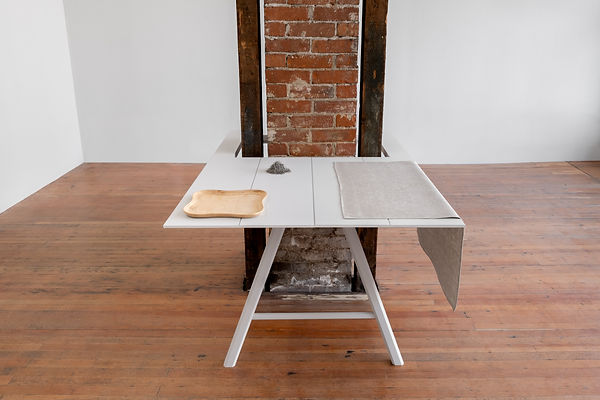
A forged spider's web installation view
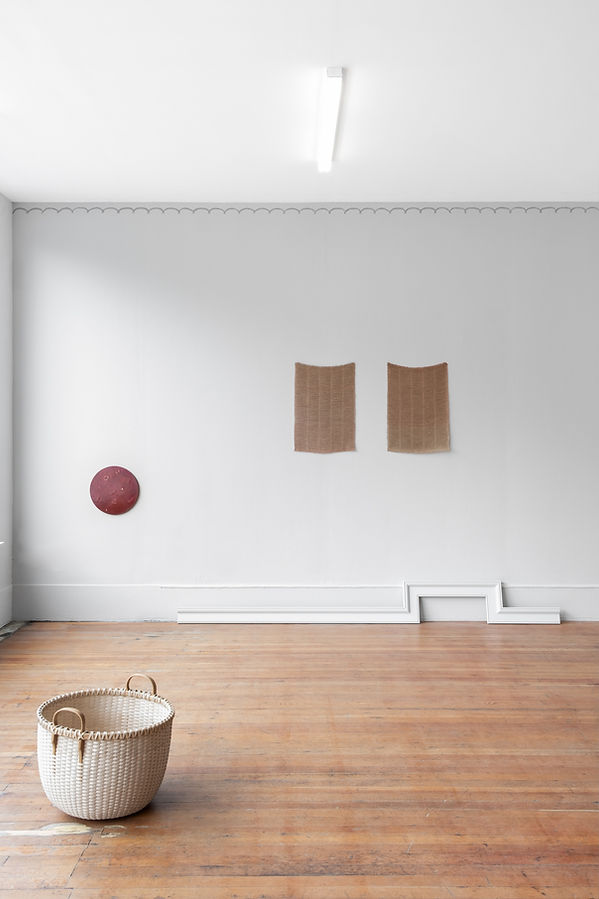
A forged spider's web installation view

A forged spider's web installation view

A forged spider's web installation view
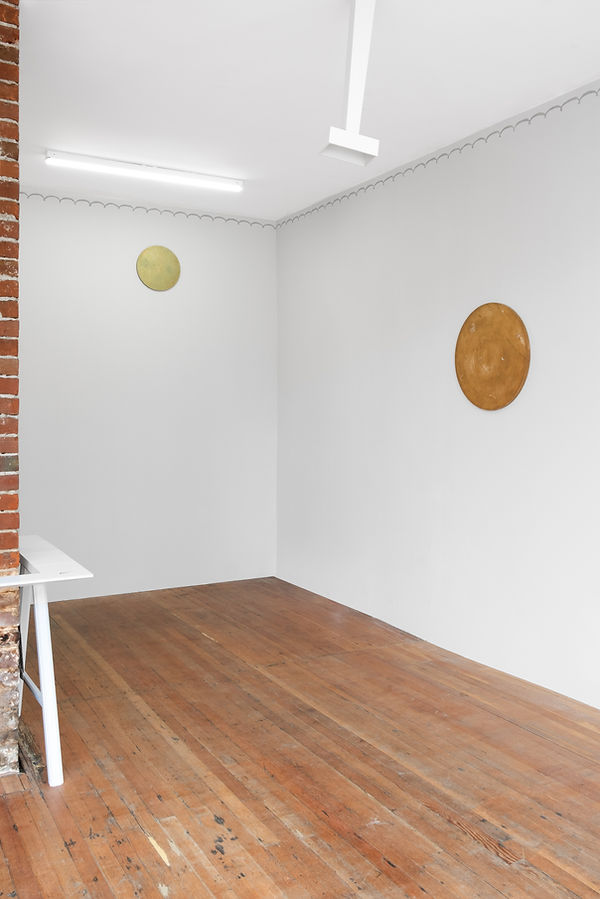
A forged spider's web installation view
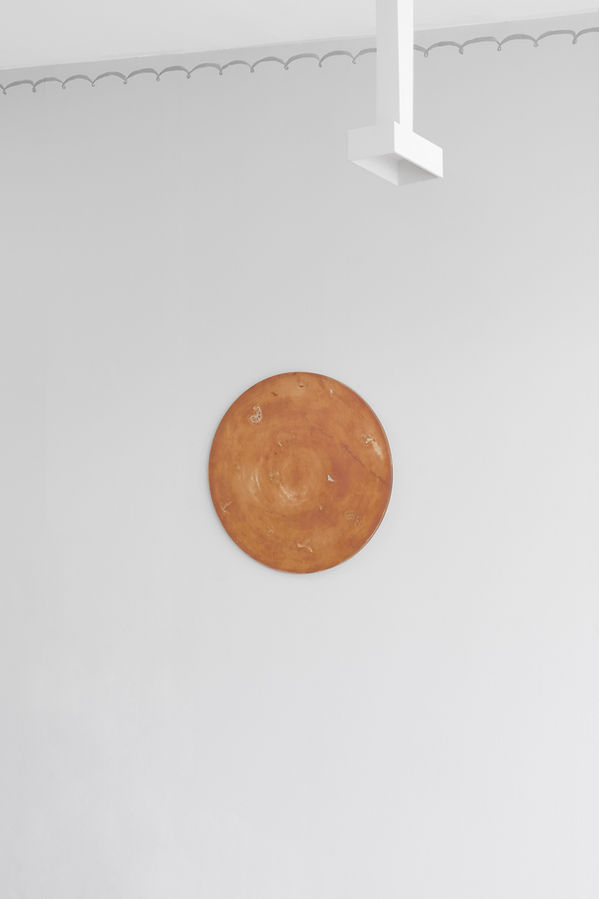
A forged spider's web installation view; with HaeAhn Paul Kwon Kajander, I U Dirt, 2022, natural lacquer with pigmented structural colour and mother of pearl on salvaged plywood, 55.9 x 55.9 x 2.5cm

HaeAhn Paul Kwon Kajander, I U Dirt, 2022 (detail)
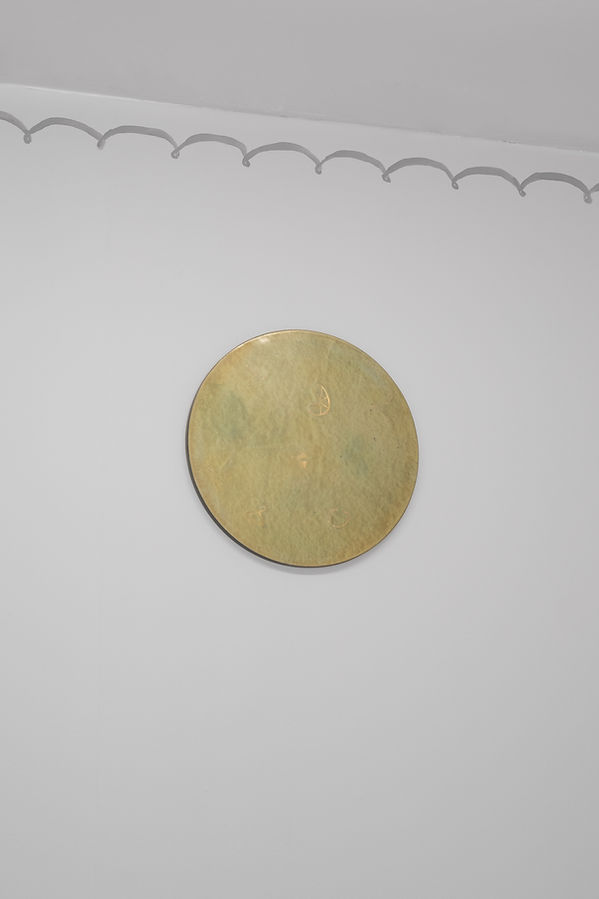
A forged spider's web installation view; with HaeAhn Paul Kwon Kajander, One’s Choice, 2022, natural lacquer with pigmented structural colour and mother of pearl on salvaged plywood, 31.8 x 31.8 x 2.5cm
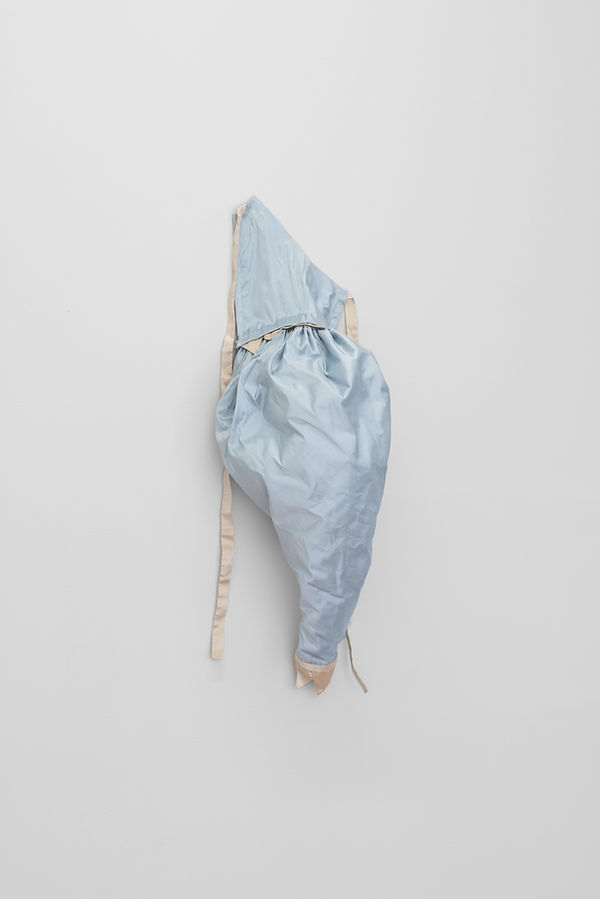
Sarah Jean Culbreth, Gigot sleeve, 2022, shot silk, 73.5 x 23 x 23cm
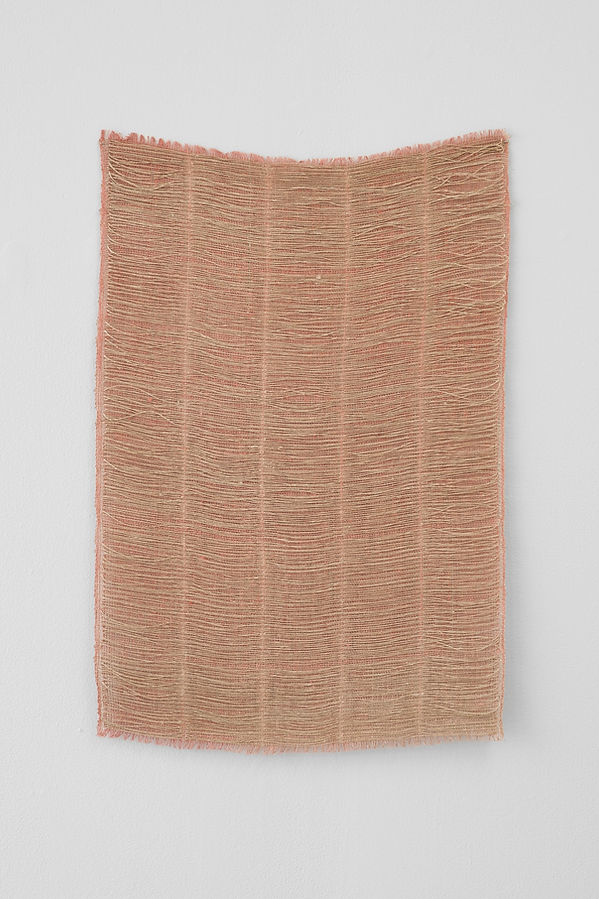
Sara Elggren, Röd Vägg / Red Wall, 2022, linen, 60 x 40cm
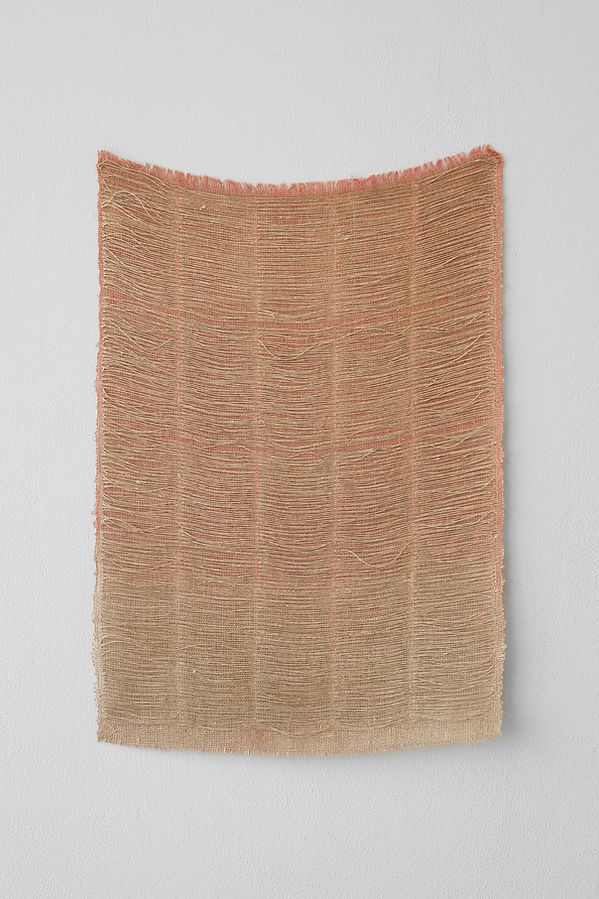
Sara Elggren, Röd Vägg / Red Wall, 2022, linen, 60 x 40cm
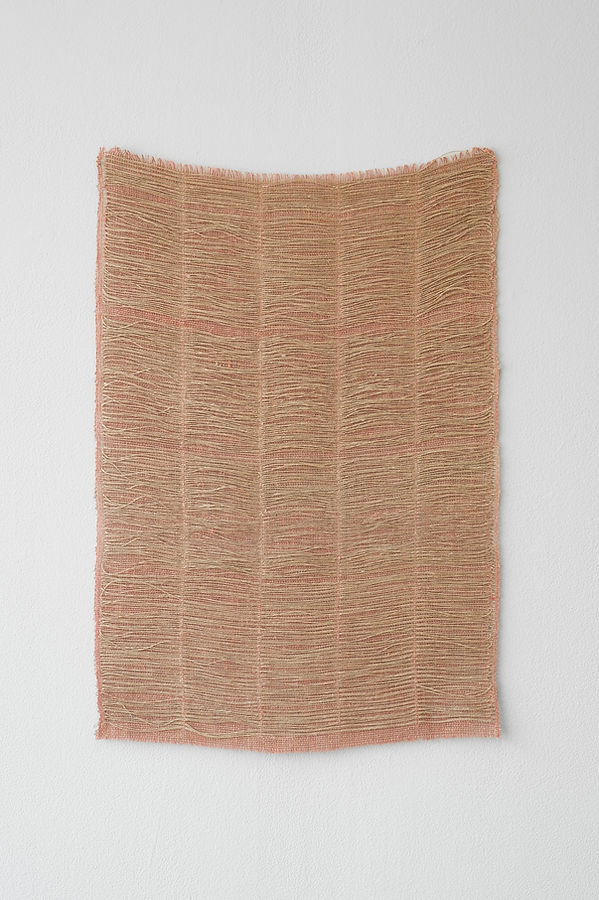
Sara Elggren, Röd Vägg / Red Wall, 2022, linen, 60 x 40cm

Sara Elggren, Röd Vägg / Red Wall, 2022 (detail)

HaeAhn Paul Kwon Kajander, One’s Body, 2022, natural lacquer with pigmented structural colour and mother of pearl on salvaged plywood, 31.8 x 31.8 x 2.5cm
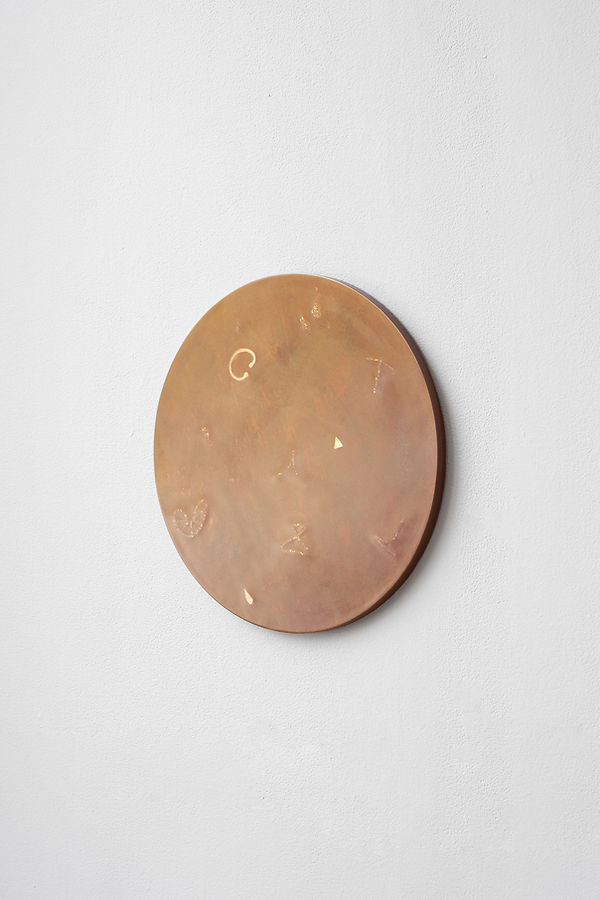
HaeAhn Paul Kwon Kajander, One’s Body, 2022
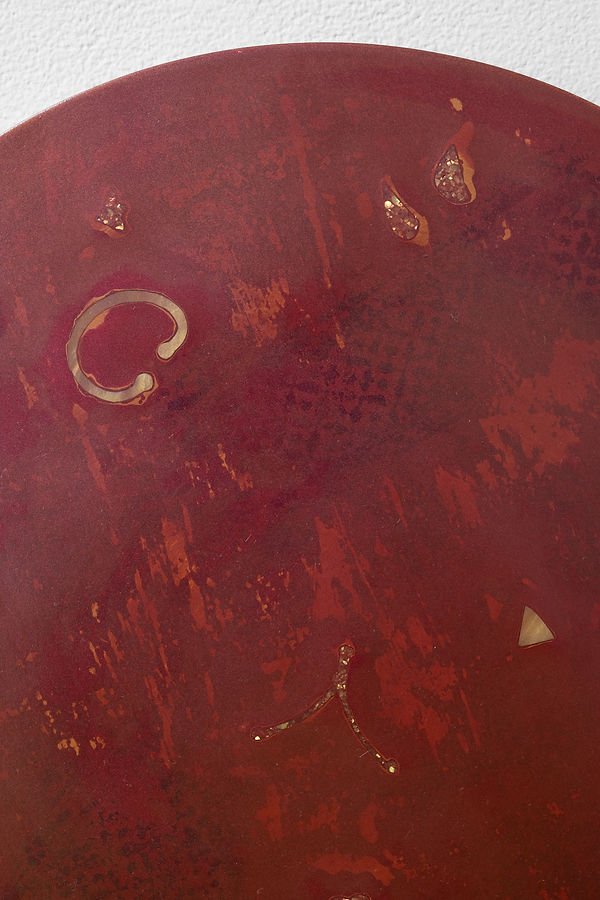
HaeAhn Paul Kwon Kajander, One’s Body, 2022 (detail)
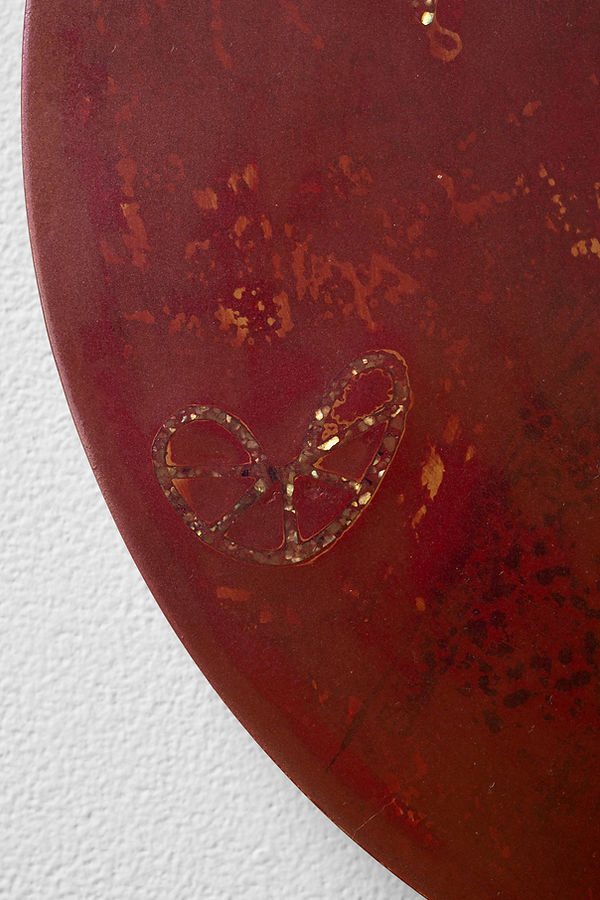
HaeAhn Paul Kwon Kajander, One’s Body, 2022 (detail)
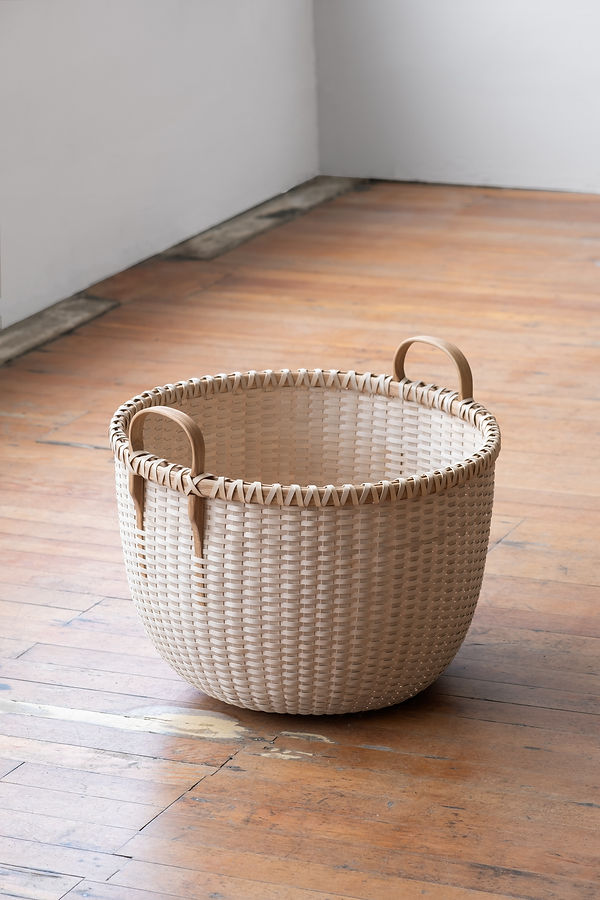
Alice Ogden, Bushel basket, 2023, pounded ash with oak handles 38 x 45.75 x 45.75cm
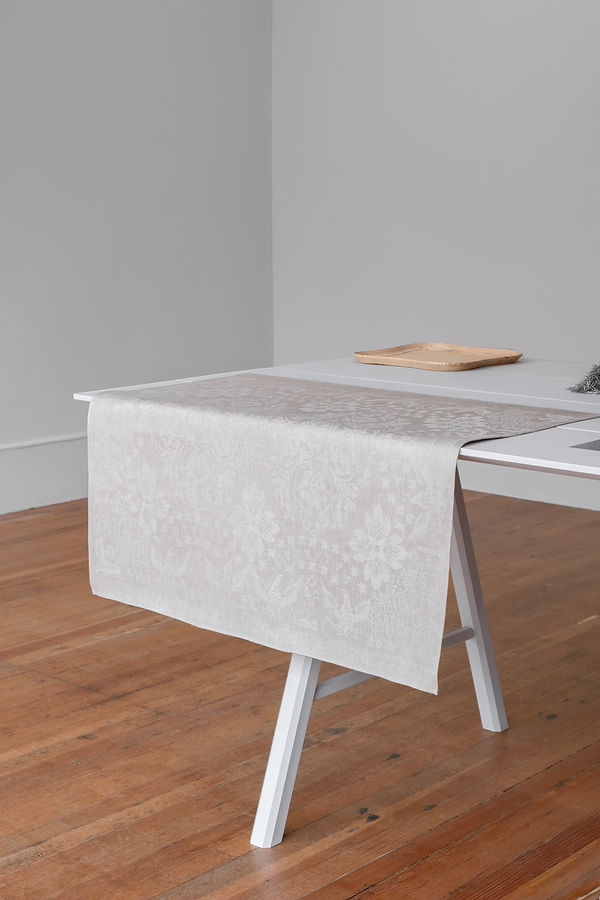
A forged spider's web installation view; with Justin Squizzero, Linen damask napkin, “Agriculture & Manufactures”, 2023, Linen woven on a 19th-century Jacquard handloom, 71 cm x 76cm & Shingo Tsukuda, Rounder tray, 2022, horse chestnut, 27 x 27 x 1.5cm

Justin Squizzero, Linen damask napkin, “Agriculture & Manufactures”, 2023 (detail)

A forged spider's web installation view; with Tsukuda, Rounder tray, 2022, horse chestnut, 27 x 27 x 1.5cm

Zoë Sheehan Saldaña, Wealth of Nations, 2015-2017, tin-plated brass pins created in the manner described by Adam Smith in ‘The Wealth of Nations’ 1776, each pin 2cm
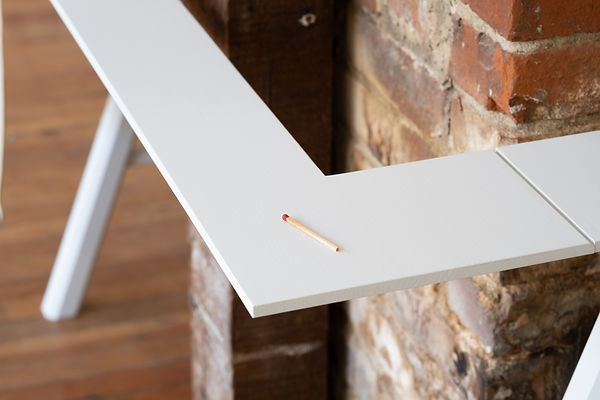
Zoë Sheehan Saldaña, Strike anywhere, 2007-08, poplar wood, wax, pigments, flammable chemicals, 5.5 x .3 x .3cm